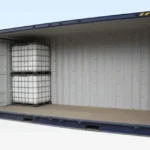Using Containers for Shipping or Exports
Did you know that around 90% of traded goods are transported by sea? That means most businesses around the world rely on shipping containers to get their goods into customers’ hands.
When using a shipping container for international shipping or exports, individuals and business owners have two options: rent a container from a carrier, or buy a container outright. A rented container is more commonly known as a carrier-owned container, or “COC”. A purchased container is called a shipper-owned container, or “SOC”.
Buying a shipping container outright (i.e., a shipper-owned container or “SOC”) is an increasingly popular option, as it provides businesses with greater control over their own supply chain. However, in order for a shipping container to be eligible for international journeys, it must comply with CSC standards and be fitted with CSC plates.
What Does CSC Mean in Shipping?
In the shipping industry, the acronym “CSC” stands for the “Convention for Safe Containers,” a standard established by the International Maritime Organization (IMO) in 1972 for Shipping Container Certification.
The Convention for Safe Containers was established with two goals in mind:
Protect everyone involved in the transport and handling of containers by providing standardized container testing procedures and strength requirements.
Facilitate international container transport by establishing uniform international safety regulations.
In short: If you need to use a shipping container for shipping or export, your container must comply with the standards set out in the Convention for Safe Containers (CSC). In order to prove your container complies with these standards, it must be fitted with a valid CSC plate.
Which Shipping Container is Best For Me?
Take this quick four-question quiz to find out.Take the Quiz
What Are CSC Plates?
CSC plates demonstrate that a container meets or exceeds the standards set out in the Convention for Safe Containers regarding Shipping Container Certification. All containers used for international transport must be fitted with valid CSC plates. Shipping lines will only accept containers with valid CSC plates onto their ships.
A CSC plate includes key information about a container’s specifications and history, including:
1. Identification number
2. Date of manufacture
3. Weight capacity
4. Stacking capabilities

In order to receive valid CSC plates, shipping containers must undergo an official CSC survey. CSC surveys are conducted by certified third-party container inspectors. CSC inspectors are responsible for checking containers using criteria laid out in the Contention for Safe Containers and certifying that they adhere to the safety standards required for international shipping.
Once this inspection is successfully completed, a container owner can expect to receive confirmation that their container is approved as a “shipper-owned container” (SOC). This means the container is ready to ship internationally.
What Kind of Shipping Containers Can Pass a CSC Survey?
All new “one-trip” containers come with valid CSC plates, making them eligible for international shipping from the date of purchase.
Cargo-worthy containers (containers that have been used for multiple international shipments, but are still in good condition) are eligible for CSC certification. However, they must be independently certified by a third-party CSC inspector before being used to ship or export goods out of the country.
Wind and watertight containers are not eligible for CSC certification. These are units that have been retired from shipping after 12-15 years at sea, and no longer meet the requirements for international shipping laid out in the Container Safety Convention.
Where Can I Buy a Cargo-Worthy Shipping Container?
Container House LDA can source and deliver 20ft and 40ft cargo-worthy containers in over 20 markets across the United States. You can buy a cargo-worthy container online on our website or speak to a member of our sales team at …

























